At the exhibition “Human Factor – Endless Prototyping” at DRIVE. Volkswagen Group Forum Berlin about 50 international artists explore the conflict between the opportunities and risks of man-made progress.
Type: Exhibition
Duration: July 1, 2016 – August 27, 2016
City, Country: Berlin, Germany
Venue: DRIVE. Volkswagen Group Forum, Berlin, Germany
Under the title “Human Factor – Endless Prototyping” about 50 international artists explore the conflict between the opportunities and risks of man-made progress. “Human Factor” features artworks dealing with the issues and challenges related to the digital revolution – with a focus on the human factor in an engineered environment. International artists reflect on the current situation to show individual approaches using prototypes depicting the interface between art and science. Their aim is to address contemporary uncertainties and to anticipate future insecurities.

Endless Prototyping
Humankind has been fighting for its very survival since time immemorial. For millennia, we have modified our habitats in going about this. We have been so successful in making everything around us so complex that we now find ourselves in the paradoxical situation of no longer being able to comprehend this world we have made.
The Human Factor, the very thing that has fostered our survival heretofore, is now yielding consequences that threaten to overwhelm us. At the nexus of art, society and industry, artists are now working together with engineers, technologists and scientists to seek promising solutions. The upshots are concepts and projects that remain unfinished, have not yet fully matured, are still untested, or whose outcome and/or further progress are unknown. Artistic prototypes that seek to answer social, ecological and economic questions. Works that inspire, and that are emblematic of new, unconventional and innovative linkups between art and industry.
Artworks
Quayola (IT), 2016
Sculpture Factory
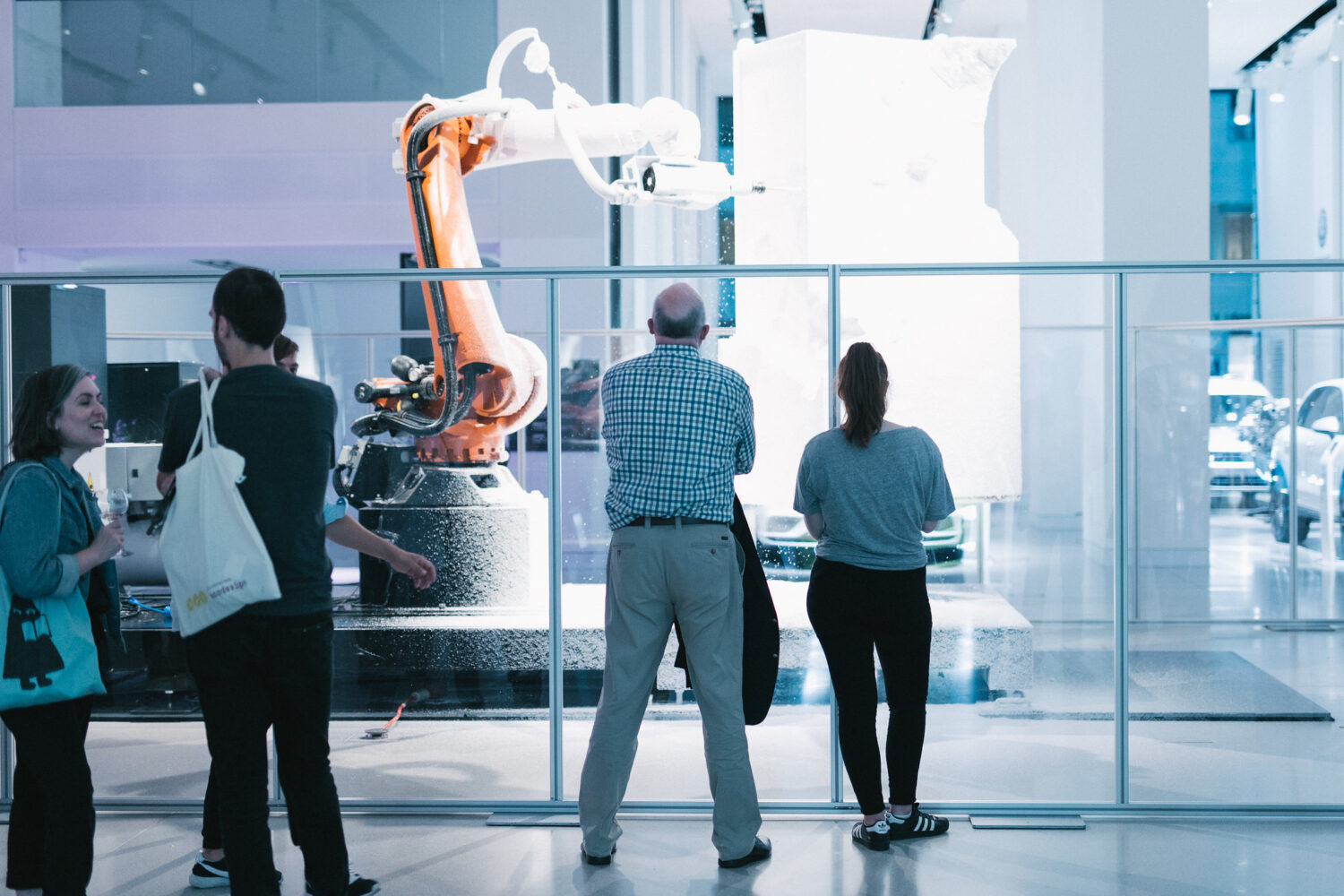
A robotic milling machine becomes a sculptor’s apprentice that turns out art in serial production. Sculpture Factory is a contemporary take on Michelangelo’s “non-finito”, and like the uncompleted originals, these works are unfinished too.
Courtesy of Quayola and bitforms gallery. Sculpture Factory is an ongoing project developed with the technical support of DARLab from London Southbank University, QD-Robotics, Kuka and Autodesk Delcam.
Daniel Boschung (CH), 2011-present
Face Cartography, creating new Identities

How do people perceive images produced by machine? With the help of a robot arm, Daniel Boschung maps faces. 600 macro-images are assembled to form these ultra-high-definition portraits. Due to their sharpness, they come across as irritating and excessively close-up. Perception vacillates between instinct and rationality.
uh513: María Castellanos (ES), Alberto Valverde (ES), 2015
Environment Dress 2.0
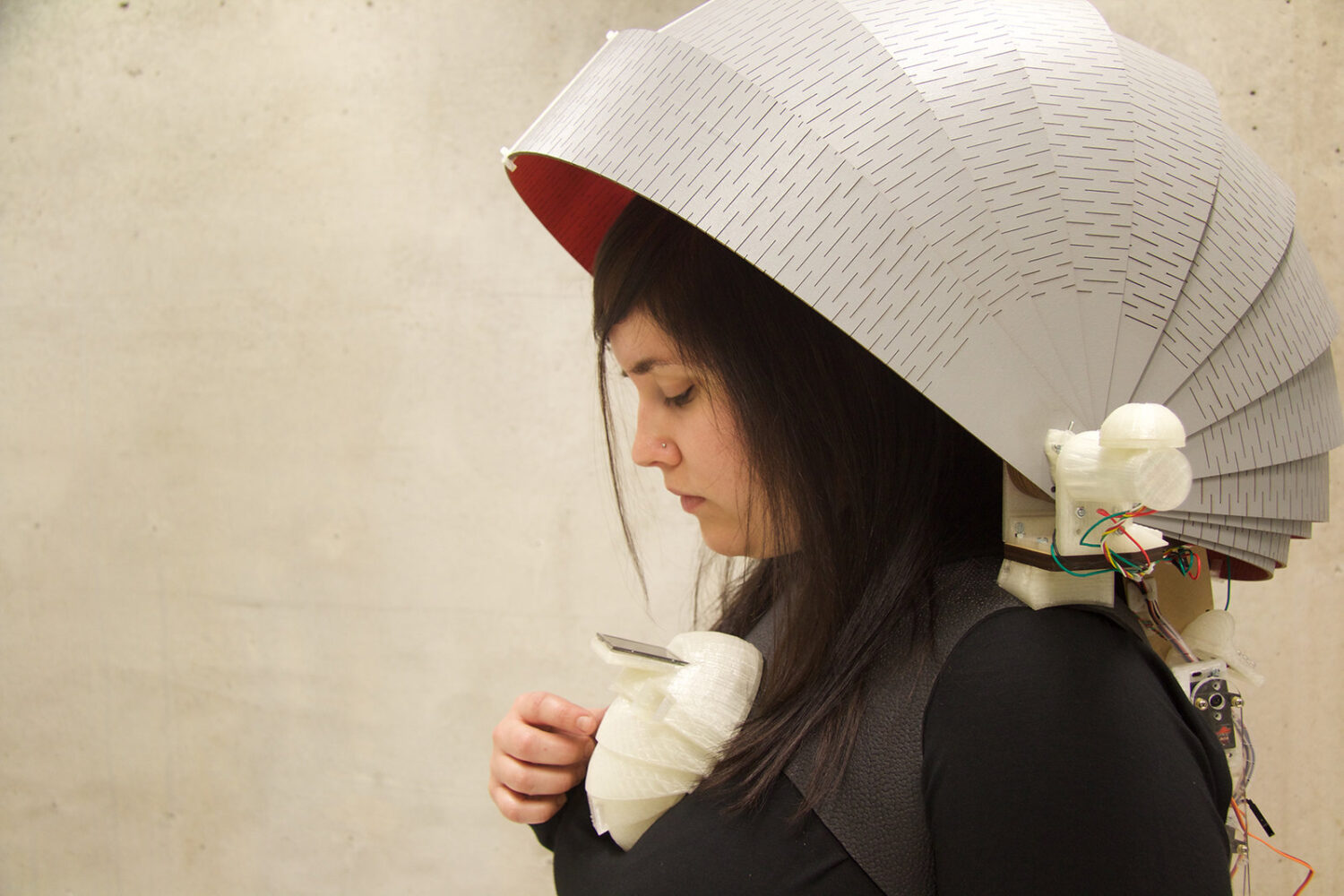
Noise, temperature, air pressure, ultraviolet radiation, carbon monoxide level—we live amidst pollutants and other factors that influence our daily life. Environment Dress 2.0 consists of garments that collect information about the wearer’s immediate surroundings, visualize the data and make them available via app.
Project created thanks to the prize Next Things 2015-Conducta. Joint call of LABoral Centro de Arte and Telefónica I+D.
Golan Levin (US), Shawn Sims (US), 2012
The Free Universal Construction Kit

This is an array of adapters that enable users to interlock pieces from the 10 most popular toy construction kits. It thus makes possible completely new forms of exchange involving what were previously discrete, closed systems. This encourages the implementation of new ideas as well as a process of reflection about the relationship between human beings and mass culture.
Released by Free Art and Technology (F.A.T.) Lab and Synaptic Lab.
Michael Burton (UK), Michiko Nitta (JP), 2015
Instruments of the Afterlife

With the help of plants and genetically engineered bacteria, these (musical) instruments transform toxic substances into valuable materials. Each instrument has been specially developed for a particular soil contaminant. This is a way to clean up zones that have been polluted by industry, warfare or electronic waste.
The piece responds to the scientific research, ‘Cleaning Land for Wealth’ (CL4W), funded by the UK’s Engineering and Physical Sciences Research Council and supported by Creative Outreach Resource Efficiency (CORE) at Loughborough University. The project involves science teams from universities at Birmingham, Cranfield, Edinburgh, Newcastle & Warwick.
Teresa Dillon (IE), Naomi Griffin-Murtagh (IE), Claire Dempsey (IE) , Aisling McCrudden (IE), 2013
Opimilk
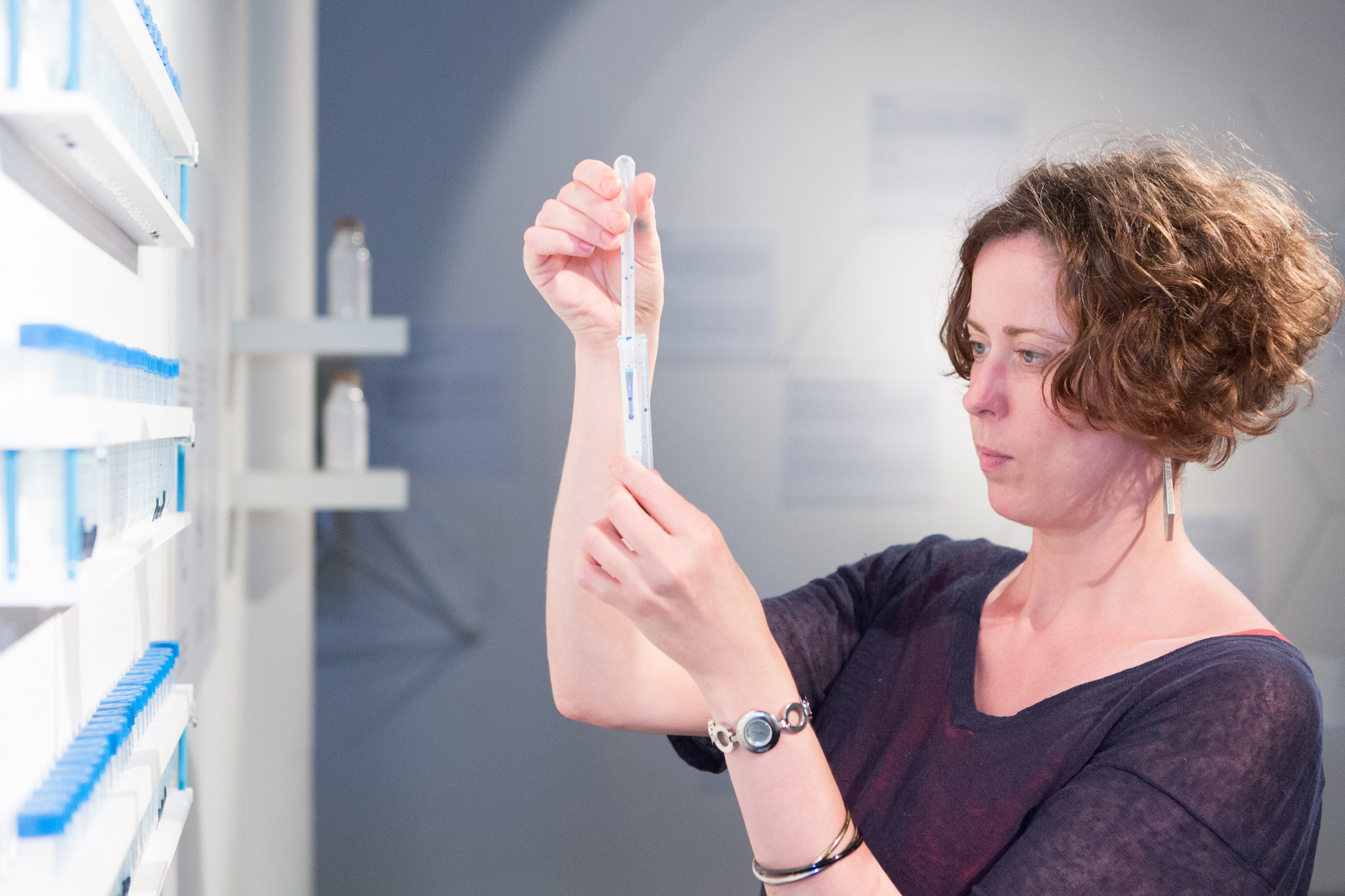
A cow as a living producer of pharmaceuticals? Human saliva contains a substance that relieves pain very effectively. The gene that produces this substance is isolated and then implanted into the fertilized ovum of a dairy cow. The outcome of this pregnancy is a calf that, as an adult cow, gives pain-relieving milk: Opimilk.
BCL: Georg Tremmel (AT/JP), Shiho Fukuhara (JP), 2008
Common Flowers

“Moondust” was the first genetically modified flower to hit the retail market. These blue poppies were purchased by the artists, who then used them to cultivate new flowers that they, in turn, planted in the wild. Thus, this flower is now common property available in the public domain. What has been created is a free space—a sort of floral allmende—is thereby created for them to grow wild and thrive for the benefit of the public at large.
Nick Ervinck (BE), 2009-2010
AGRIEBORZ
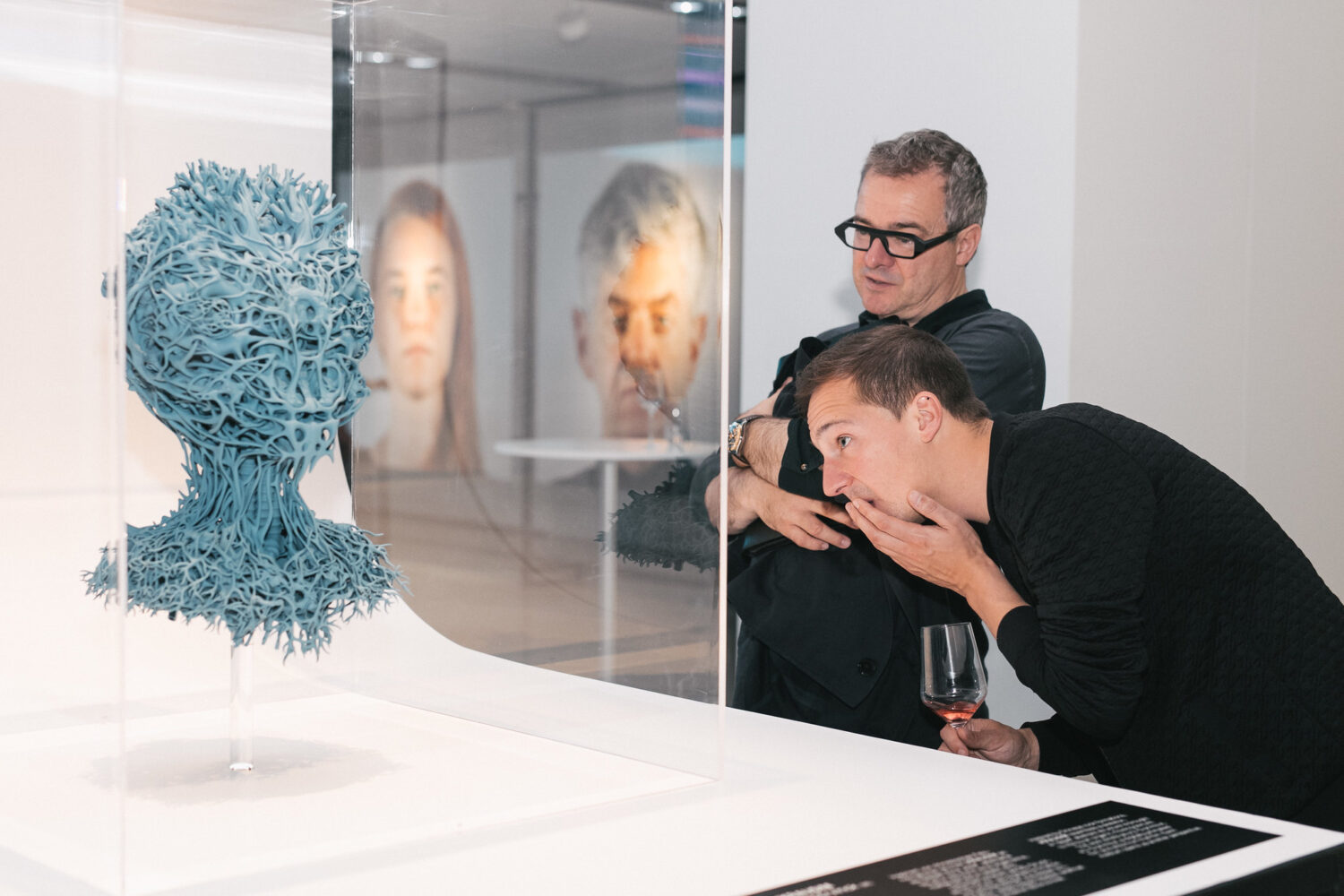
The artist modeled AGRIEBORZ on medical handbooks’ depictions of parts of the human body—muscle groups, nerve networks and the circulatory system. The works thus not only allude to the increasing trend of integrating technology into the human body; they also play with the fascinating possibility of using living tissue as technical material.
Nick Ervinck (BE), 2009
IKRAUSIM
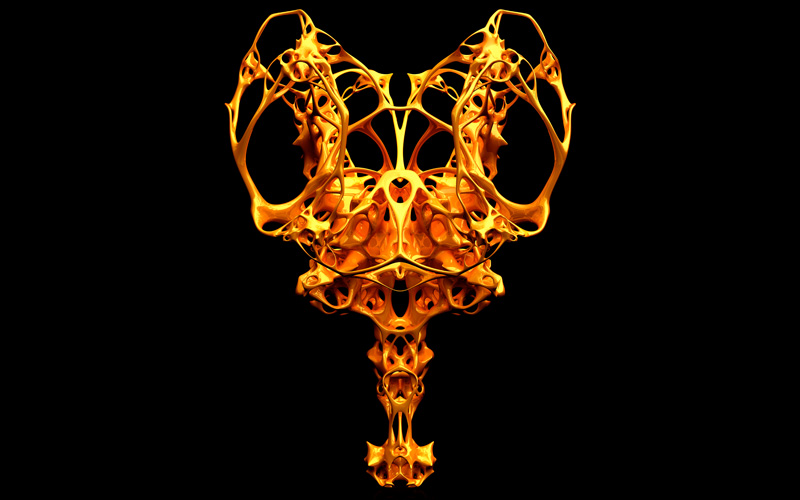
Inspired by Chinese rock formations, IKRAUSIM resembles a skeleton. A “dead” abstract structure is brought to life by an organic, flowing texture. The work exists as a 2-D printout, a 3-D printout, a digitally animated film and stills from that film. Each medium opens up another perspective.
Agnes Meyer-Brandis (DE), 2014-present
Teacup Tools
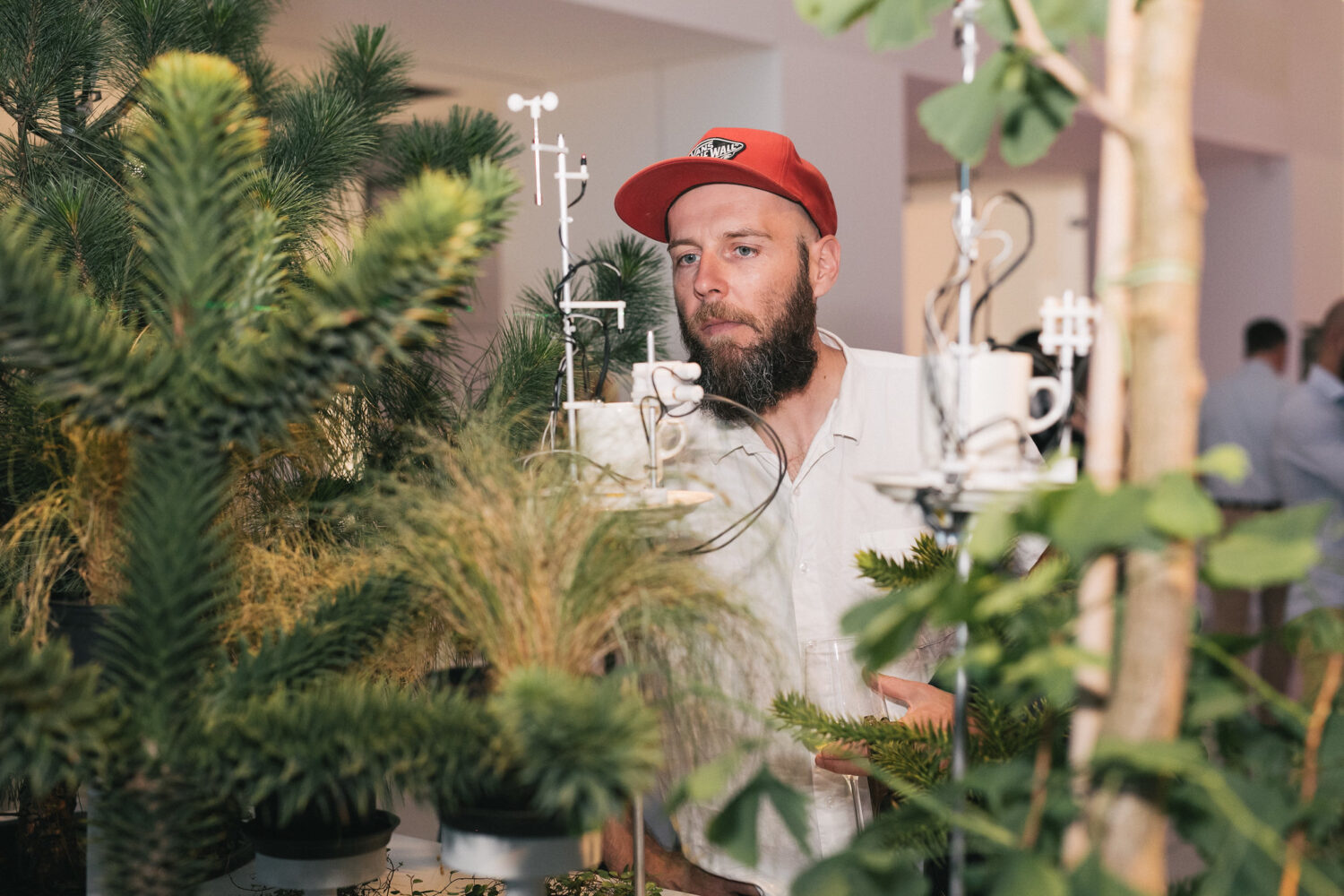
The tea is infused using everything that falls from the sky: leaves, dust, rain. Measuring instruments in and on the teacups emit heat to brew the tea. Information in the tiny clouds of steam rising from the concoction are likewise registered by the measuring equipment. The result is an endless loop, and environmental data thus gathered can be sipped as a cup of tea.
The project was produced in the scope of the “Climate Whirl Project”, a collaboration by the Department of Forest Sciences, the Department of Physics (University of Helsinki) and Capsula. Supported by Kone Foundation and the ResearchRaft for Art and subjective Science.
Patrick Tresset (FR/UK), 2012-present
Human Study #1, 3RNP
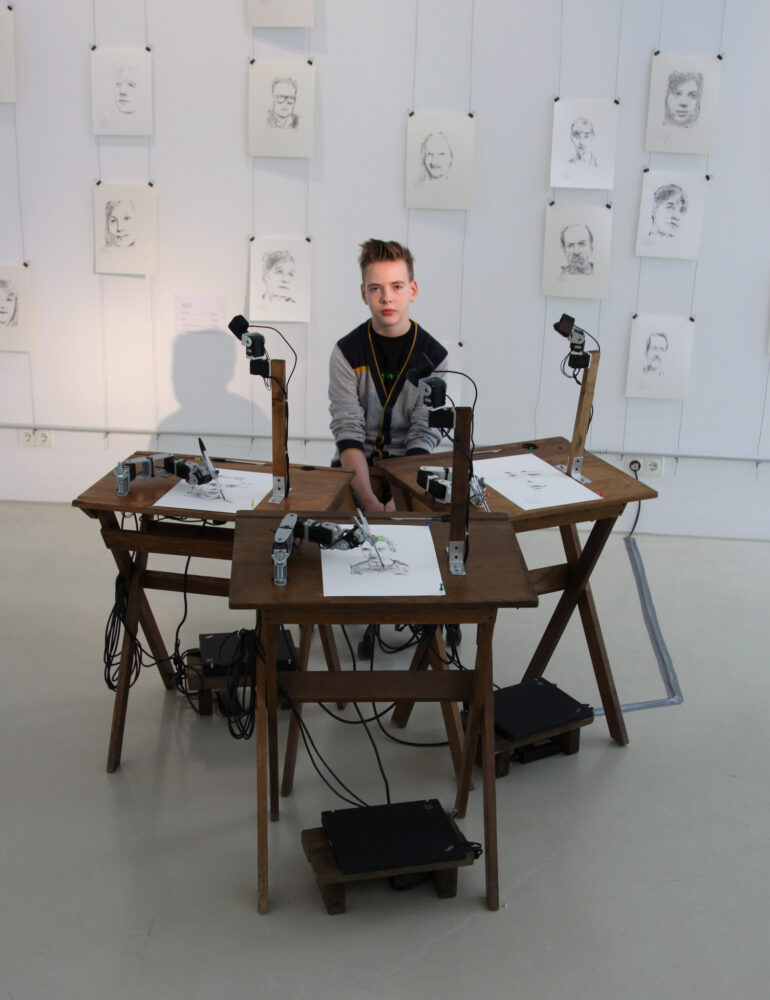
The three drawing robots named Paul-XI.a, .b and .c have old school desks for bodies and webcams for eyes. The subjects sitting for portraits are observed both by the robots and by the audience. For the robots, each individual is merely the object of a study; for the audience, they are nothing more than one of four actors in a brief theatrical scene.
Jacob Tonski (US), 2012
Balance From Within

A sophisticated mechanism balances a 170-year-old sofa on only one leg. It’s constantly in danger of losing its balance and crashing to the floor. It reacts to externally applied forces by means of internal compensatory maneuvers. In robotics, high priority has been given to development of control systems to maintain and restore equilibrium.
Ars Electronica Futurelab (AT): Hideaki Ogawa, Matthew Gardiner, My Trinh Gardiner, Christopher Lindinger, Emiko Ogawa, Roland Haring, 2010-present
SWITCH

A switch is a simple interface that’s used to jump from one state into another. For SWITCH, two pictures are created—one for ON, one for OFF. A sensor that reacts to motion, sound, brightness or temperature toggles between the two images. Exhibition visitors are cordially invited to give their input to ON/OFF.
IGB–Leibniz Institute of Freshwater Ecology and Inland Fisheries (DE), 2016
INAPRO Innovative Aquaponics for Professional Application
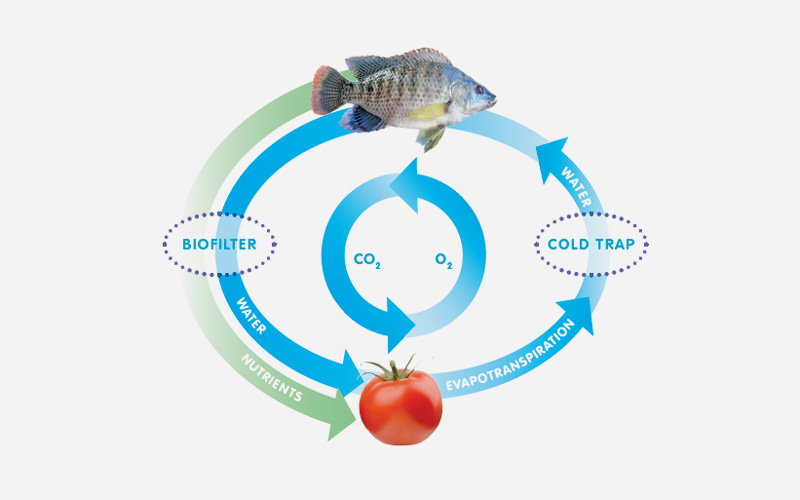
Aquaponics combines the cultivation of fish and plants in a closed cycle. The water the fish live in provides nutrients for the plants; the plants filter the water for the fish. INAPRO makes a nutritional solution available to the plants as required, and returns the collected plant condensate back to the fish cycle.
bioMASON (US), 2012-present
bioMASON Biocement Masonry
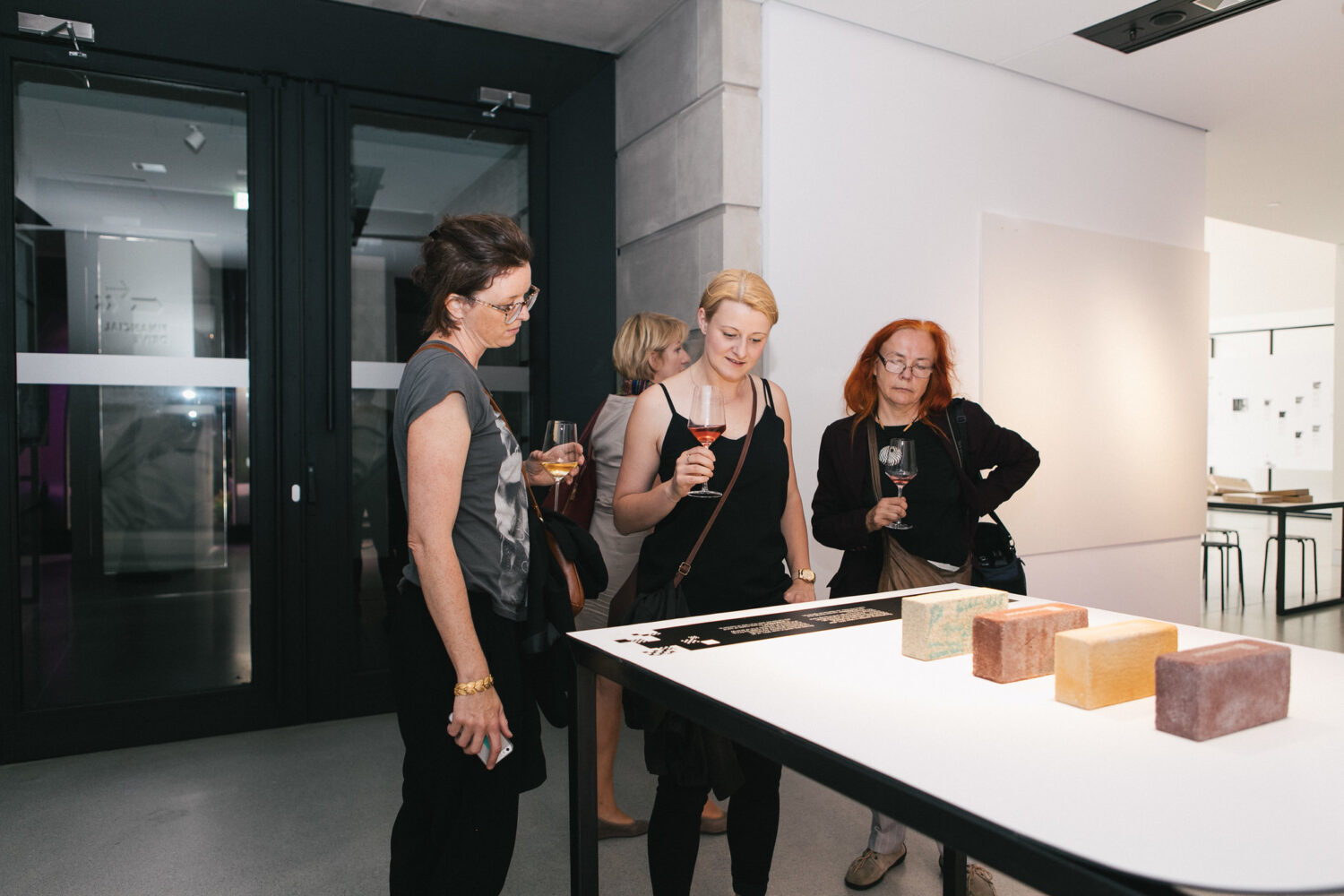
Bricks are used in over 80% of all construction projects worldwide. Conventional bricks are made by firing, a process that requires a lot of energy and emits much CO2. In bioMASON, bricks made of sand are hardened with the help of bacteria.
Unknown Fields Division (UK/AU), 2015
Rare Earthenware

Rare earths are essential to the production of electronic devices and other technologies. This film traces rare earths’ path back to a radioactive lake. Mud from the lakebed is formed into three vases, whereby each one contains precisely as much toxic material as results from the production of a smartphone, a laptop or a car battery.
Commissioned by The Victoria and Albert Museum Unknown Fields in partnership with the Architectural Association Film and Photography in collaboration with Toby Smith, Ceramics work in collaboration with the London Sculpture Workshop, Animation assistance from Christina Varvia.
Afroditi Psarra (GR), Dafni Papadopoulou (GR), 2014-2016
“The Culture” series
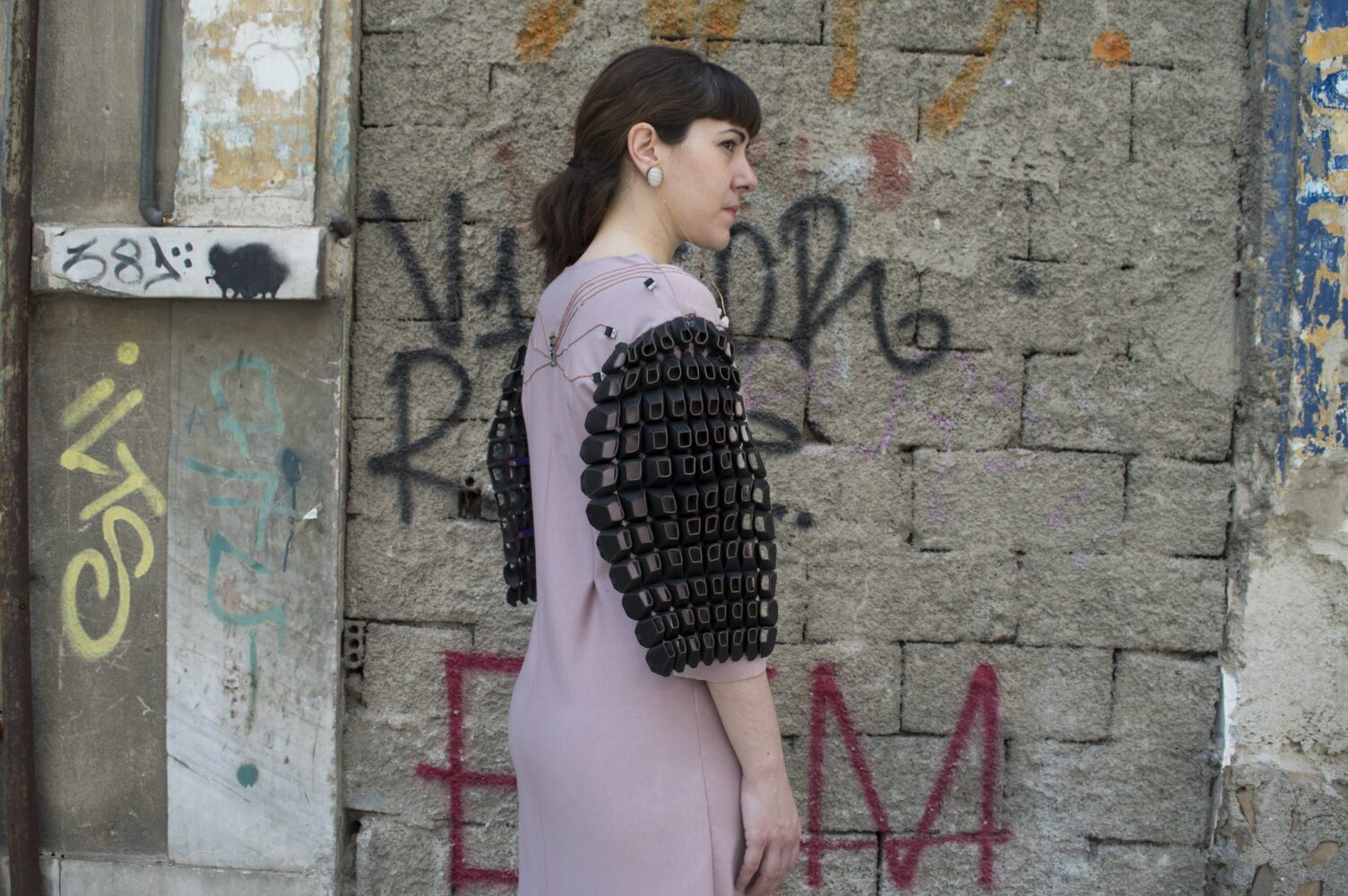
These wearables—computer systems that are attached to the user’s body while they’re in operation—behave like sensitive organisms. They react to their wearer’s actions and physical state with slight movements. They were inspired by clothing and jewelry in the science-fiction novels of Iain M. Banks.
Jennifer Lyn Morone (US), 2014-present
Jennifer Lyn Morone™ Inc
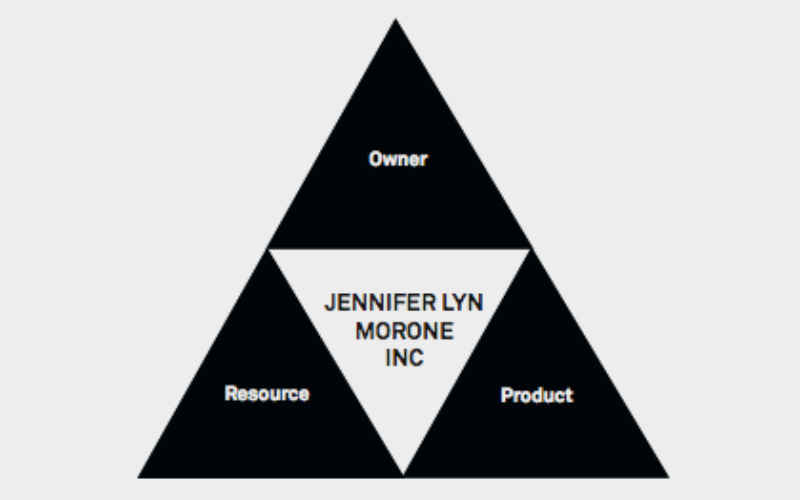
The natural person named Jennifer Lyn Morone markets herself as a registered corporation, Jennifer Lyn Morone™ Inc. that exploits and sells past experiences and current potential (genes, work, creativity, blood, sweat and tears), future potential, and all data yielded by her quantified life.
Julian Melchiorri (IT/UK), 2014
Silk Leaf
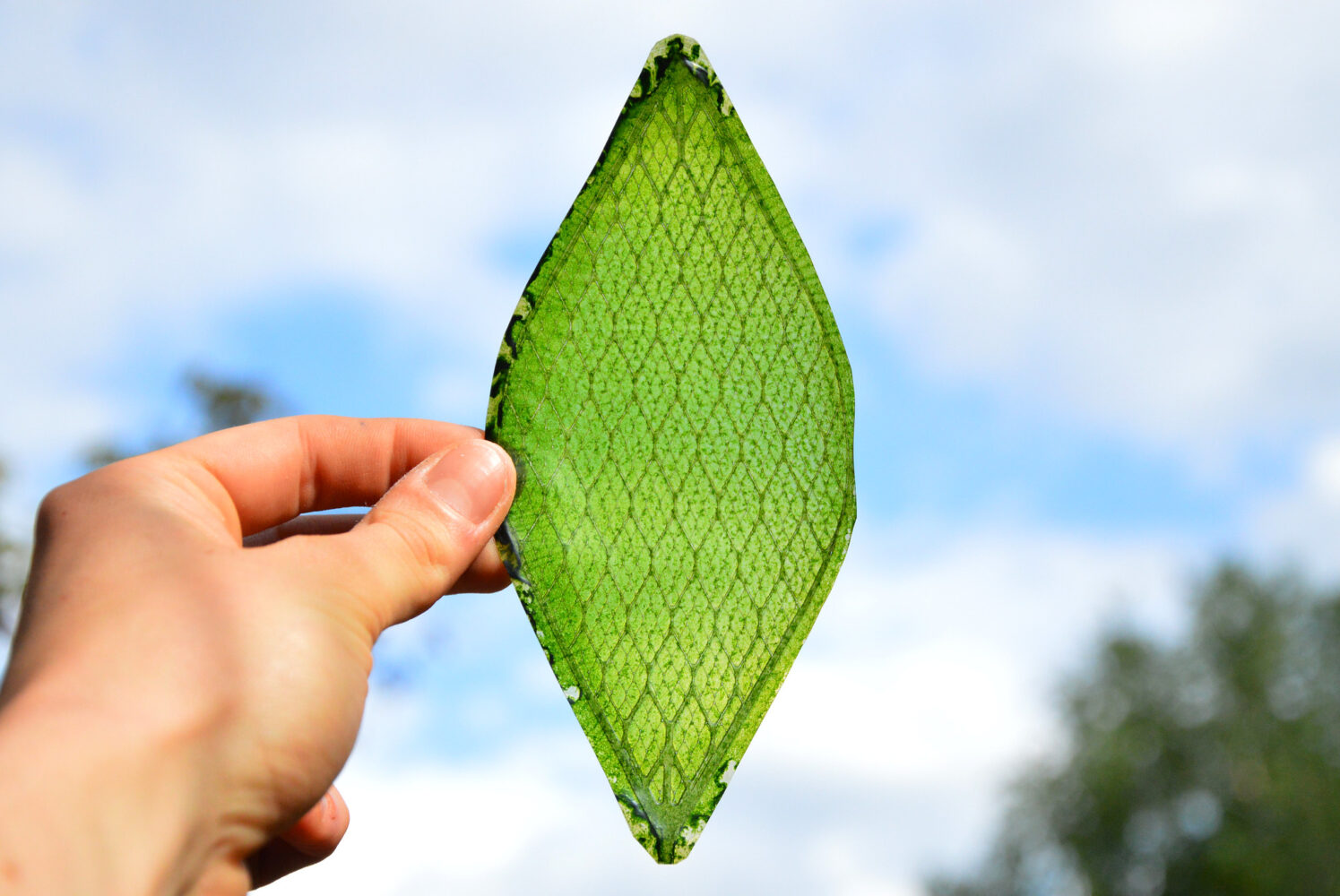
Inspired by natural mechanisms and physical phenomena, Julian Melchiorri (IT/UK) conducted laboratory experiments in order to explore the potential for making materials that photosynthesize, and their possible applications. Silk Leaf is the first result of this research. It is a modular device that photosynthesizes, made of a biological material mostly composed of silk protein and chloroplasts.
Certain Measures: Tobias Nolte (DE), Andrew Witt (US), Michael Degen (US), Jason Tucker (US), 2016
Mind the Scrap

Instead of the laborious task of recycling construction rubble, Mine the Scrap finds a new use for even the tiniest part. The software scans the material and calculates how these pieces could be combined into a new form.
Gavin Munro (UK)
The Wiltshire Chair

Gavin Munro lets his chairs grow right in the garden, and totally dispenses with glue and screws in the process. With the help of traditional craftsmen’s techniques and modern computer simulations, he brings forth young sprouts shaped like pieces of furniture. After three to four years, the finished furniture can be harvested.
Istituto Europeo di Design – IED (IT): Cesare Griffa (Master coordinator) with Mohamed Awaty, Victória Calil Barriatto, Anirudh Datta, Giulia Del Din, Samuel Fiolis, Riccardo Rigo (students), 2016
Sammy P.
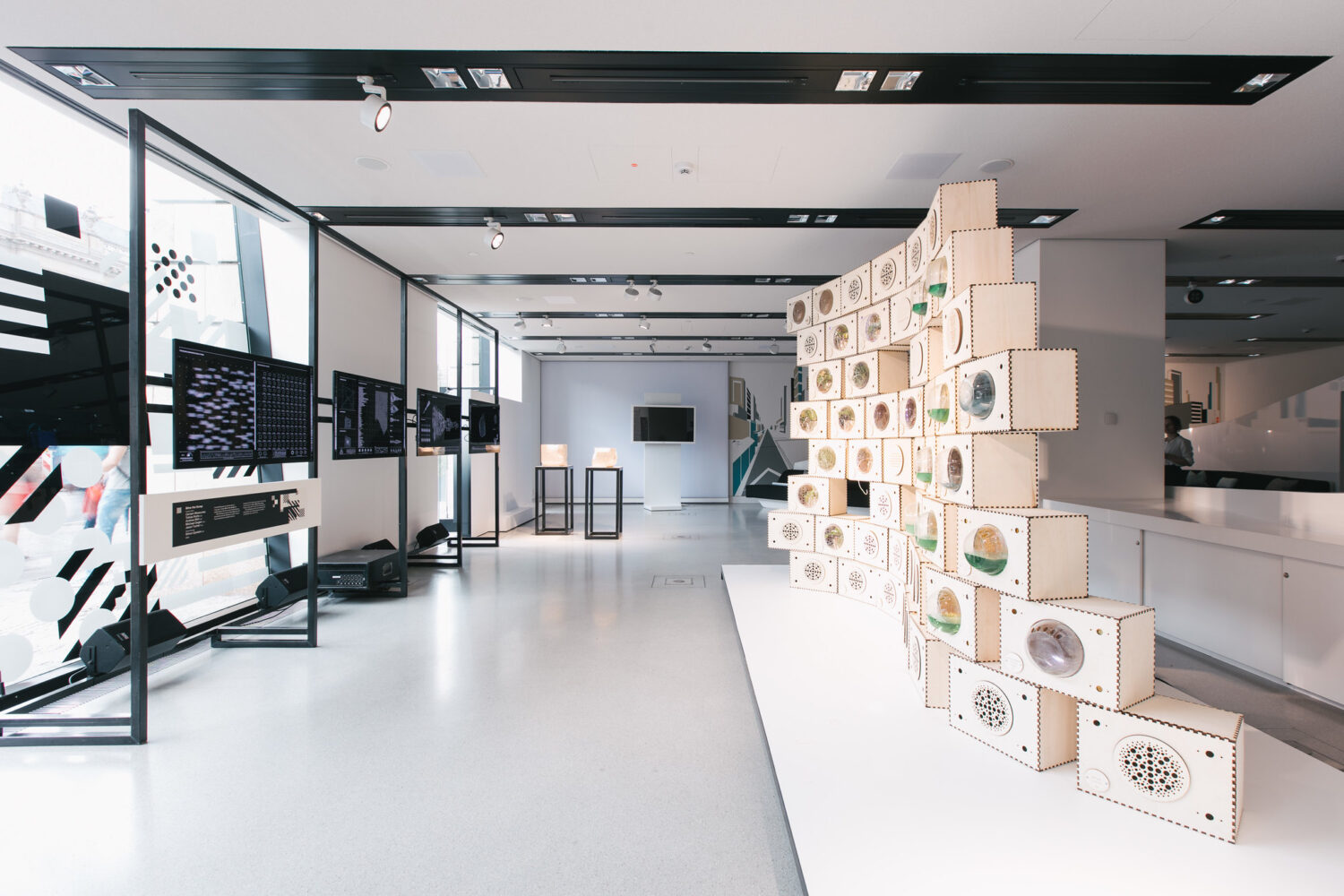
Performing photosynthesis, plants convert carbon dioxide (CO2) into glucose and oxygen. The system entitled Sammy P. combines various technologies to cultivate special high-photosynthetic plants. And not only do these micro-algae bind a disproportionately large amount of CO2; they’re also a tasty vegetarian source of protein.
Teaching staff: Marco Caprani, Andrea Graziano, Stefano Paradiso, Fabrizio Alessio, Giacomo Leonzi, Tibor Antony
Partners: Officine Arduino, Arup
YQP: Maximilian Hoch (DE), Florian Dohmann (DE), Manuel Urbanke (DE), 2014
Datenmarkt
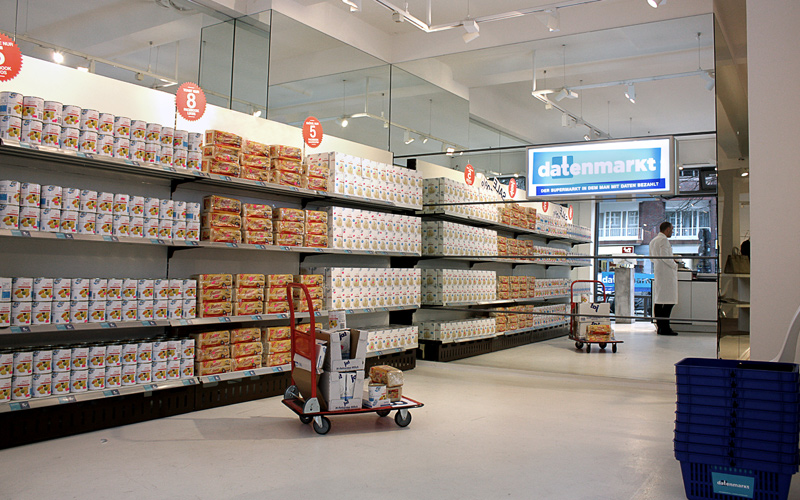
A prospective future scenario envisions day-to-day business transactions involving our data—a supermarket in which customers can pay only with their personal Facebook data. No cash. No credit cards. No checks. Just data. Special thanks to Anita Hass store, Jana Koeder, Charlotte Kehl, Daniel Freitag and Katia Flouest-Sell
CUBE CREATIVE PRODUCTIONS: Nicolas Deveaux (FR), 2013
5 Mètres 80
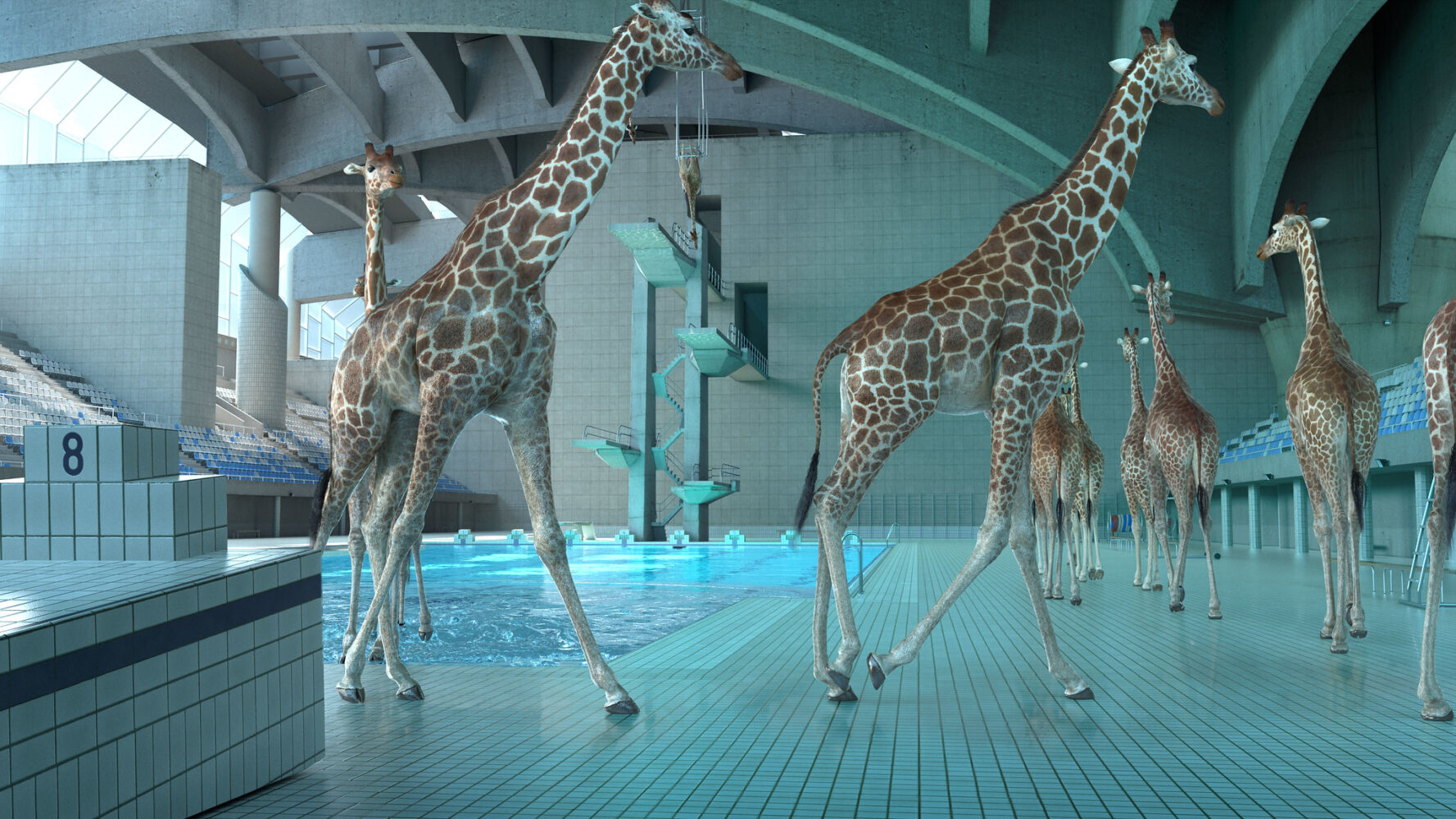
A herd of giraffes embarks on a sequence of high-flying acrobatic dives. One after the other, the giraffes dynamically execute the most awesome rotations and twists before knifing perfectly into the water of the Olympic-size indoor swimming pool. The absurdity of the situation comes as a surprise, and then quickly dissolves to make room for a healthy dose of humor.
Karl Julian Schmidinger (AT), Joschi Viteka (AT), 2016
Human Sound Factor
The objects on display are represented in the soundscapes by familiar musical sequences and embedded in atmospheric tonal imagery. The styles of the symbolic passages range throughout musical history from the time of Michelangelo, through the Industrial Revolution, to the New Music of the 20th century.
Florina Costamoling (AT), 2016
Vestigium
With every step we take, we slightly change our environment. But the traces that individual human beings leave behind are not what endures; their totality is what constitute the Human Factor.
Ars Electronica (AT), Maria Pfeifer (AT), MOOI OG (AT), 2016
As Time flies by
“If I have seen further, it is by standing on the shoulders of giants.” – Isaac Newton, 1676
For which manmade problems do we seek solutions? How is humankind configuring the world? What does progress actually mean and what influence do creativity, flexibility and the spirit of cooperation have on innovation? The Human Factor Timeline includes historical phenomena, discoveries and developments that have led up to the works on exhibit. It offers examples of artistic and scientific inventions that have changed the lives of human beings up to this day, showing how prototypes have become common, everyday objects and how industry also makes an impact on art and society.
STARTS: Science, Technology und ARTS.
Appointed by the European Commission, Ars Electronica has launched a prize to select the most pioneering collaborations and results in the field of creativity and innovation at the nexus of science and technology with the arts. A selection of prizewinning and nominated projects is presented in the exhibition.
